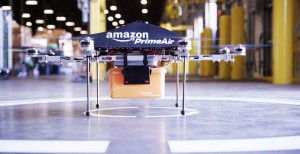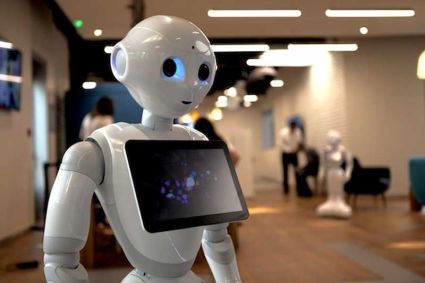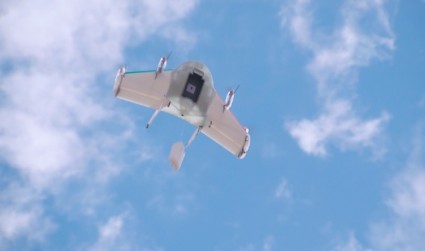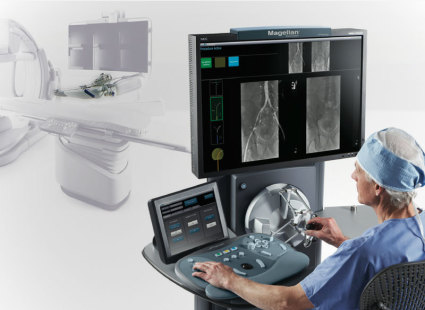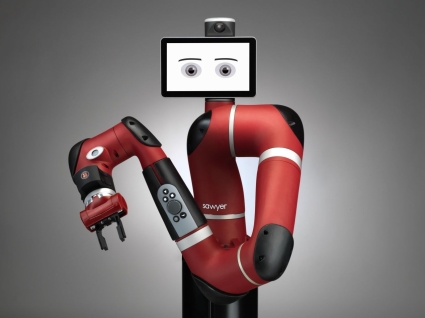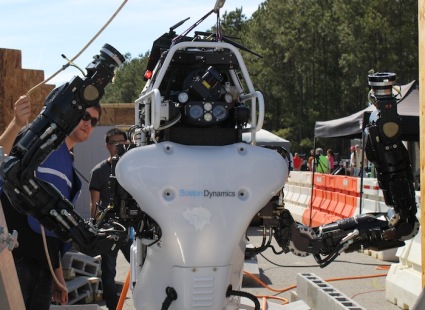
Robohub.org
Robohub Digest Mar. 2015: EU drone framework, Amazon drones in Canada, cancer-fighting nanotech, Google goes surgical
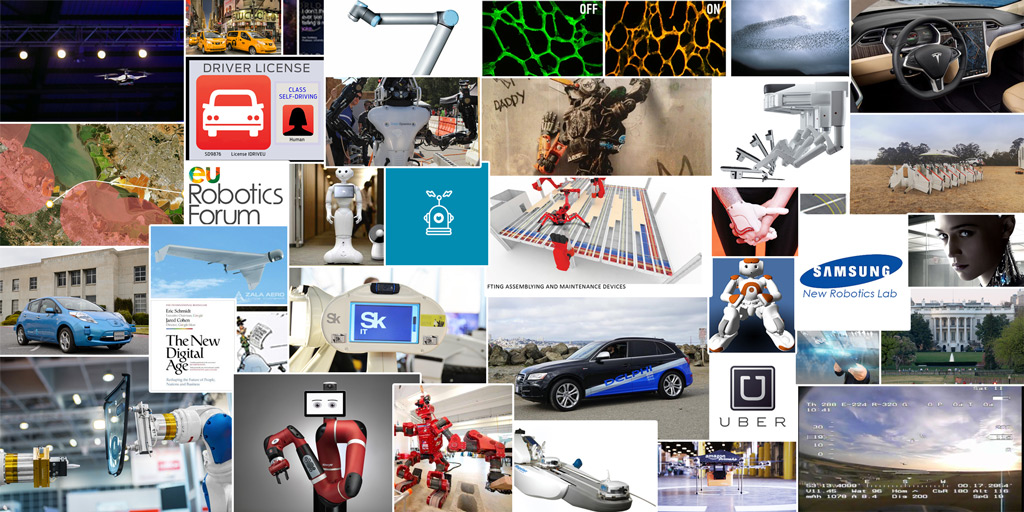
A quick, hassle-free way to stay on top of robotics news , our robotics digest is released on the first Monday of every month. Sign up to get it in your inbox.
In the air
This month closed with a positive announcement from European stakeholders as they agreed on the basic principles for a regulatory framework on RPAS (Remotely Piloted Aircraft Systems) use. The focus of the new framework is on safety, integration and liability, and could govern RPAS operations in Europe from 2016.
In the US, the FAA is currently consulting on its proposed rules for UAVs, which were published last month and have been hailed as a start to more clarity on drone operations in the country. Drone flights beyond visual line of site remain an unresolved issue under the new rules, but are already possible in Canada, Australia, France, Israel, Poland and other countries. These FAA restrictions on flights beyond visual line of site are the main reason why internet giant Amazon has decided to move their outdoor trials of drone delivery service Prime Air to Canada. Meanwhile, investment in drone ventures continues despite the uncertainty, with Matternet going into production with their new drone delivery platform.
On the road
Last month saw Uber joining forces with Carnegie Mellon University, possibly to compete with Google in the race to get the first robotaxis on the road. But can a robotaxi business model work? Brad Templeton did the number crunching for us this month and found that an UberX flag drop now costs as little as $0.18 per minute / $0.90 per mile. This could mean that we will soon start seeing people deliberately dropping cars for Uber, and that robotaxi services could be available for even less.
But it could be that the first robotaxi on the road will be from neither Uber or Google, but from Nissan. Documents obtained by IEEE Spectrum show that the car manufacturer is working with NASA, and they are aiming to have the first fleet of robotaxis ready in as little as two years from now.
Meanwhile, Delphi took their sensor-laden vehicle on a test drive from New York to San Francisco, and Tesla’s Model S is about to go semi-automatic when a new software update is released later this year. The company’s CEO Elon Musk even went as far as to predict a future where it is illegal for humans to drive.
With robocars and robotaxi services no longer just an idea for the distant future, it is no surprise that some have started to call for regulations to be put in place. Questions about safety features, possible certification of robocars, or even special drivers licenses for operating autonomous cars have been raised. But in an essay about regulating autonomous cars, Brad Templeton argues that it might be too early for such strict rules to be put in place, as too little is known at this point about the technology and how it will work in the real world.
On the job front
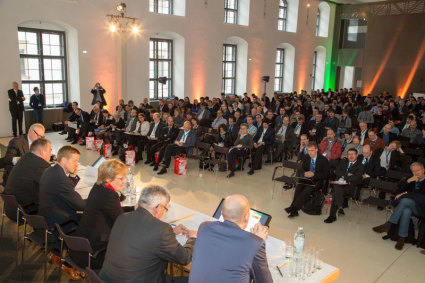
The impact of automation on jobs was the topic of the opening session at this year’s European Robotic Forum. Credits: Viennamotion KG.
With increasing investment and big names pushing forward innovation in automation, it is no wonder that critics are voicing concerns, fearing the loss of many jobs and mass unemployment. Neil Jacobstein explains the risks of automation and artificial intelligence on Sigularityhub.com, but maintains an overall positive outlook if humans manage to adapt.
Forbes writer John Tammy even goes so far as to suggest that robots will become the biggest creators of jobs in history. He argues that when robots take on jobs traditionally done by humans, we will be freed to pursue new and more exciting careers that could take humanity to the next level. On a similarly positive note, research by the Boston Consulting Group (BCG) indicates that the use of robots could boost manufacturing productivity by up to 30 per cent by 2025, while lowering total labour costs.
The impact of automation on jobs was also the focus of the opening sessions at the EU Robotics Forum held in Vienna this month. During the opening session a panel of experts discussed whether fears of mass unemployment were justified and how they might be addressed. More coverage from the ERF can be found here.
In Russia
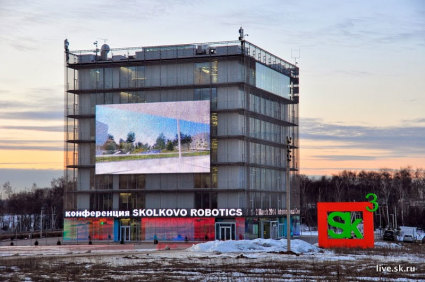
The Skolkovo International Robotics Conference took place this March, to promote innovation and robotics startups in Russia. Credit: sk.ru
Kalashnikov Concern – maker of the infamous AK-47 automatic assault rifle – has decided to purchase a majority stake (51%) in ZALA Aero, a Russian company that specializes in producing unmanned aircraft. The company hopes to enter the robotics market by producing reconnaissance unmanned aerial vehicles.
While such military robotic ventures are nothing new for Russian manufacturer, the recent Skolkovo International Robotics Conference sought to stimulate innovation in other areas, such as recognition, artificial intelligence and personal service robotics.
Robotic personal assistants
Globally, teams working on AI solutions for personal assistance robots are racing to develop a product that satisfies businesses, end users and consumers alike. At the moment it is still unclear whether virtual or physical solutions will be favoured. Meanwhile in Japan, all three hundred units of Pepper sold out quickly, showing just how much demand there is for social robots. Why are such products so popular? With Pepper it may well have something to do with the novelty of this type of robot.
A study by a team from the University of Manitoba presented at the recent HRI conference showed that humans empathize more with robots when they can interact with a physical entity, rather than just a software simulation.
Tiny medicine
 There was exciting news from the medical robotics front this month. One of the most exciting recent inventions in medical robotics is a nano-device that can disarm drug resistant cancer cells and then deliver targeted chemotherapy. The approach has recently been shown to work in mice by MIT researchers and could offer hope to patients with recurring drug resistant cancer in the future. Google’s Deep Mind is also joining the fight against cancer with a similar project, attempting to develop nanotechnology that can switch off cancer cells. Alan Winfield outlined the future of robotics surgery and the potential of surgical micro-robot swarms from a presentation at the Royal Society of Medicine.
There was exciting news from the medical robotics front this month. One of the most exciting recent inventions in medical robotics is a nano-device that can disarm drug resistant cancer cells and then deliver targeted chemotherapy. The approach has recently been shown to work in mice by MIT researchers and could offer hope to patients with recurring drug resistant cancer in the future. Google’s Deep Mind is also joining the fight against cancer with a similar project, attempting to develop nanotechnology that can switch off cancer cells. Alan Winfield outlined the future of robotics surgery and the potential of surgical micro-robot swarms from a presentation at the Royal Society of Medicine.
More Google News
This month Google declared that they will scrap ‘Project Wing’ design in favour of a secret new design the company is now testing in Australia. The switch was motivated by problems with high winds and control, something designers are now working to overcome with the new design.
Another team at Google is rethinking the way office space is used. They are working on Crabots, small robotics cranes that can move floor tiles and furniture to completely transform offices of the future. And that’s not all, as Google is also looking to get into robotic surgery by joining forces with Johnson & Johnson to develop a robotic-assisted surgical platform.
Business News
The move by Google and Johnson & Johnson means they are now competing with surgical robotics manufacture Intuitive Surgical, who have managed to grow and thrive despite various setbacks over the years, most recently winning a lucrative contract with the US Department of Defense.
Other robotics companies also managed to obtain additional funding, with Hansen Medical selling shares worth $35 million and Clearpath Robotics receiving $11.2 million to create a swarm of self-driving carrier robots for factories.
In other business news, Samsung just launched a $100 million laboratory dedicated to drones, robotics, 3D printing and virtual reality.
New in arms
Universal Robots have developed a universal robotic arm that can be programmed by almost anyone by simply grabbing and moving it. The UR-5 arm is compact and lightweight and can be used to automate many manufacturing tasks. Meanwhile, Rethink Robotics launched their new single armed robot, Sawyer, designed to take on precise, repetitive tasks, particularly in the assembly of electronics.
But robotic arms don’t all have to be about manufacturing, as was amply demonstrated at London’s Wearable Tech Show this month. At the event, Grace Mandeville presented Open Bionics new 3D printed Swarovski-crystal-adorned prosthetic arm, demonstrating that prosthetics can be about glamour just as much as they are about functionality.

People with disabilities are no longer waiting for health services to catch up – they are dragging their medical devices into the future on their own.
On the red carpet
Two much anticipated robot movies hit the big screens this March. Neill Blomkamp’s CHAPPiE is an action packed movie about a robot that learns to think and feel for himself, while Alex Garland’s Ex Machina is a beautifully framed film about human-AI-interaction.
Robohoax at SxSW

On the subject of entertainment, at this year’s SxSW event in Austin Texas, a small group of protesters wielding signs saying “Stop the Robots!” descended on the grounds outside the event, saying they represented a group of students who were concerned about the future impact of robots on society. The protesters received attention from the International Business Times, PC Magazine, TechCruch, USA Today, Yahoo News, and Fox News even did a TV segment, but it turns out it was all a viral marketing stunt by a new online dating app called Quiver that uses humans to do the matchmaking instead of algorithms. Quiver admitted to the hoax a few days later, but it turned out theirs was not the only robot PR stunt at SxSW – promoters for the new film Ex Machina got into the game too.
DARPA Robotics Challenge
Finally, DARPA announced that a total of 25 teams will be participating in the finals in June, and they can expect a surprise task will be waiting for them at the end of the trials. Tech writer Eric Sofge predicts that the robots will be falling all over themselves in the final stages of the competition when the training wheels finally come off. Whether this comes to pass is hard to tell, but we’re certainly looking forward to an exciting end to the competition.
Events to watch out for in April
- National Robotics Week, April 4-12, across the US
- How to Integrate & Leverage Robotics in Warehouses, April 6, RBR Webinar
- Xconomy Forum: Robo Madness West, April 7, Menlo Park, CA
- Ground Robotics Capabilities Conference and Exhibition, April 7-8, Arlington, VA
- CRUSER TechCon 2015, April 7-8, Monterey, CA
- Silicon Valley Robot Block Party, April 8, Palo Alto, CA
- 5th Annual “Robots in the Roses” Research Fair, April 9, Menlo Park, CA
- We Robot 2015, April 10-12, Seattle, WA
- 2015 UN CCW meeting on killer robots, April 13-17, Geneva
- Gulf Coast MakerCon 2015, April 18, Tampa, FL
- RoboCupJunior US Competition, April 19, Bronx, NY
- New Frontiers in Human-Robot Interaction, April 21-22, Canterbury, UK
- VEX Robotics World Championships, April 22-25, Anaheim, CA
- RoboBusiness Europe, April 27-30, Milan, Italy
tags: Robohub Digest


